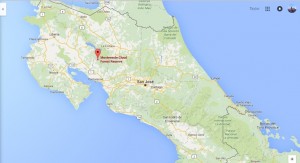
Most common species: Orchids. In fact, according to a guide, Mark, in the park, 90% of the orchids in cloud forests are epiphytes. Also, of the 9,000 vascular plants, 3,000 of them are epiphytes. Overall, the cloud forest has a very diverse and abundant collection of epiphytes.
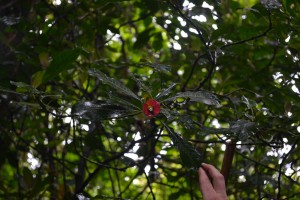
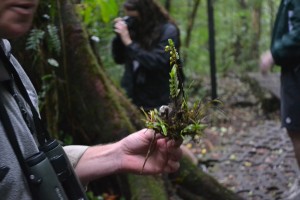
Functions in this climate: As both Robert Welch and Ranger Mark explain, non-vascular epiphytes, like mosses, can actually be a micro-ecosystem in themselves, or can gather together in an ecosystem of epiphytes entirely. Welch explains that mosses can be habitats for arthropods, and the buildup of layers of epiphytes can be habitats for many insects. In the photo above, Ranger Mark is telling us that on that little piece of bark in his hand, there are at least 8 epiphytic organisms living on it.
Specializations in this climate: In this area, with the large amount of moisture in the air, the epiphytes collect that moisture more easily. The “clouds” around them allow them to have constant access to the moisture that they need.
Impacts on environment around them: Community Cloud Forest Conservation makes the comment that in some cases, the amount of epiphytes on one tree can actually take over the tree so that it cannot access any light or water for itself. The vines or mosses can prevent branch or stick growth as well.
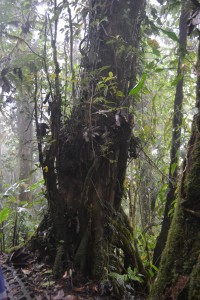
Future in this climate: For epiphytes that thrive in the cloud forest, they will need to continue to move up slopes as global warming changes temperatures and precipitation, then they will have to compete. In a tour discussion, Ranger Mark explains that just a mile down the slope in the preserve, there are no epiphytes because there can be periods of up to 6 months without rain. Furthermore, according to the ranger, global warming has the potential to knock out the cloud forest in the next 50-100 years. The epiphytes in the area rely on the constant moisture in the cloud forests, so their fate would be similar once the cloud forest disappears.
Also according to Ranger Mark, epiphytes “could be one of the first groups to show signs of stress as climate changes.”
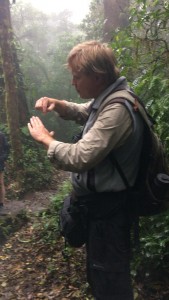
References:
http://jrscience.wcp.miamioh.edu/fieldcourses07/PapersCostaRicaArticles/Epiphytes.Anecosystemcont.html
http://www.cloudforestconservation.org/cloud_forest/
